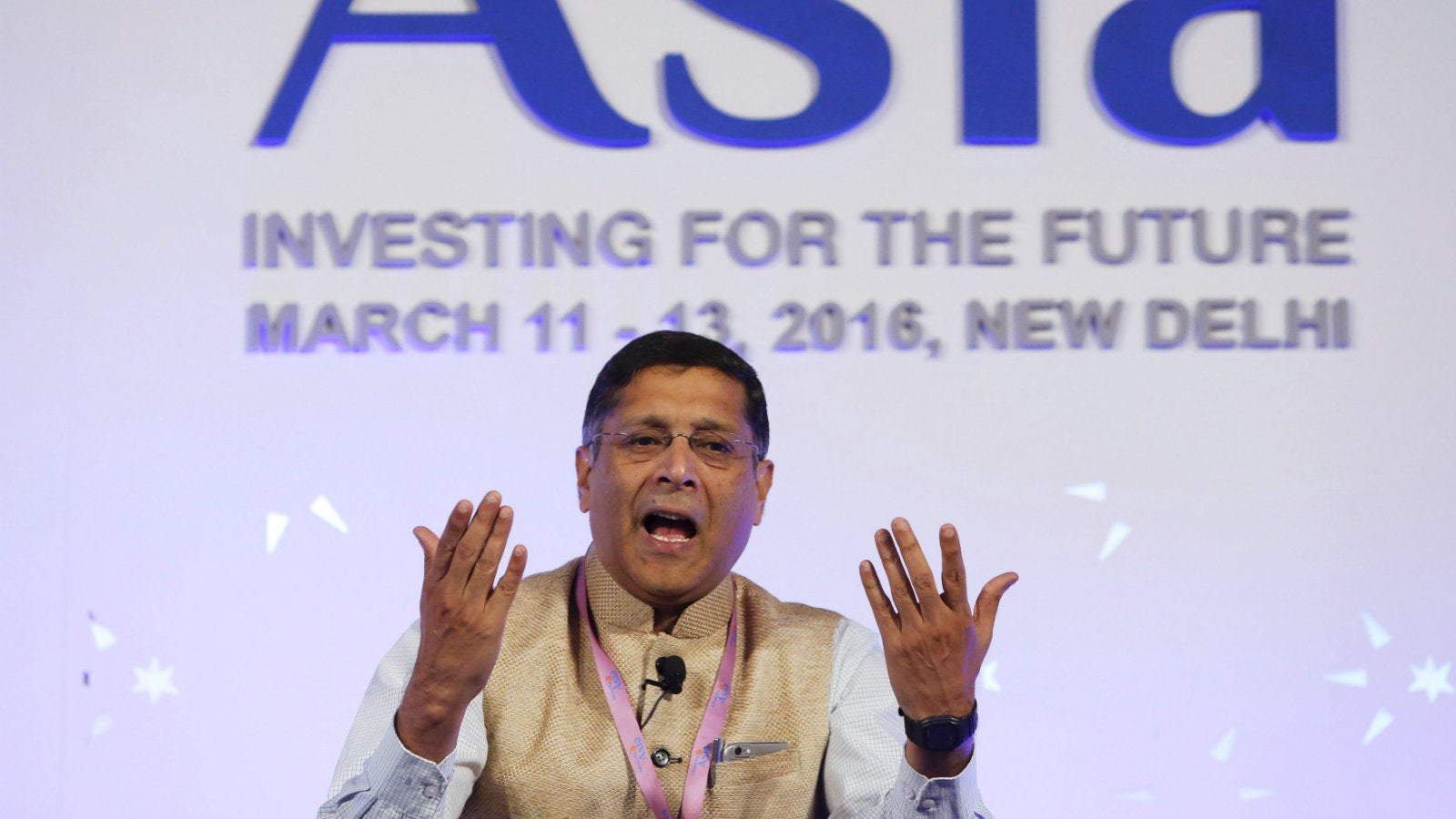“Egregious” and “compromised”: India thinks ratings firms like S&P and Moody’s are biased
Since September 2016, the Narendra Modi government has repeatedly voiced its disappointment with global credit ratings firms for not changing the world’s fastest growing economy’s sovereign rating. In fact, during this period the government has reportedly also lobbied with firms like Moody’s to get the country’s rating pushed up.


Since September 2016, the Narendra Modi government has repeatedly voiced its disappointment with global credit ratings firms for not changing the world’s fastest growing economy’s sovereign rating. In fact, during this period the government has reportedly also lobbied with firms like Moody’s to get the country’s rating pushed up.
Now, the backlash is getting stronger.
On May 11, Arvind Subramanian, India’s chief economic advisor, once again alleged that ratings firms were biased towards other nations like China. “In recent years, rating agencies have maintained India’s BBB- rating, notwithstanding clear improvements in our economic fundamentals (such as inflation, growth, and current account performance). At the same time, China’s rating has actually been upgraded to AA-, even though its fundamentals have deteriorated,” he said during a lecture in Bengaluru. Subramanian, a former economist at the International Monetary Fund (IMF), also said the ratings firms’ methodology is “one of the most egregious examples of compromised analysis.” In the past, too, Subramanian has criticised ratings firms for their methodology.
But is this scorcher justified?
While India is convinced that its excellent GDP growth and other economic fundamentals, the country deserves a ratings upgrade, firms think otherwise. Most of the top ratings firms like Standard and Poor’s, Moody’s and Fitch have underscored some glaring problems with the economy: India’s debt to GDP ratio and the state of public finances.
This assessment doesn’t bode well with the Modi government, for whom a ratings upgrade was a top priority since coming into power three years ago.
Debt trap
Rating firms also say that an upgrade is unlikely in the near future.
On May 02, Fitch affirmed India’s ‘BBB-‘ ratings and said that “weak public finances continue to constrain India’s ratings.” In November last year, both S&P and Moody’s had affirmed their ratings on India and highlighted the country’s debt to GDP ratio.
Currently India’s debt to GDP ratio—which shows how much a country owes to internal as well as external borrowers—is around 68%. India has brought down this ratio from over 80% in the early 2000s. In Asia, only Japan has a higher debt to GDP ratio at 248%, according to IMF data. China’s debt to GDP ratio is around 43%.
“One issue that remains a constraint on the ratings is the fiscal balance. There is some fiscal consolidation at the central level but if you include the states as well, the general government deficit it is still very large compared with peers and the debt level is also very large, 68% of GDP,” Thomas Rookmaaker, director, sovereign ratings at Fitch told the Economic Times in on May 12.
“..It was mentioned in the budget speech (about) this targets of bringing government debt down to 60% of GDP but there is no clear commitments from the government and it is not clear yet what they are going to do with it,” he added.
Flawed analysis?
And it’s not only the government in India that is unhappy with the ratings firms. On May 01, Deepak Parekh, chairman of housing finance company HDFC Corp, questioned the lack of change in India’s sovereign ratings, despite it being the fastest-growing emerging economy with positive macroeconomic indicator. “On the other hand, Italy and Spain, which are far weaker and smaller, are having much higher ratings than us,” Parekh said.
The economic research unit of State Bank of India (SBI), the country’s largest lender, said in a May 11 report that the ratings firms’ reasoning is flawed. The report said that many better-rated countries such as the US, Singapore, Canada and Austria have a higher government debt-to-GDP ratio than India. “In fact, most of these countries have debt positions which have been worsening over time but that has not affected their ratings much, maybe because of other macro fundamentals and the advantage of already being in the developed country bracket,” the SBI report said.
The report added that the composition of the Indian government’s debt should also be looked at as India’s government debt is largely owed to domestic lenders. “As a conscious strategy, issuance of external debt (denominated in foreign currency) is kept very low in India,” the SBI report said.
Other experts have noted that ratings firms sometimes don’t understand emerging economies. “The big three rating agencies which control 95% of the market, the American Moody’s and Standard and Poor’s (S&P), and the British Fitch, tend to have a better knowledge of countries and products closer home, while those far away geographically are lesser well-known,” Lourdes Casanova, a senior lecturer at Cornell University’s S C Johnson School of Management, told Quartz in January.
But with its relentless nagging, India seems out to ensure that ratings firms understand its economy better.